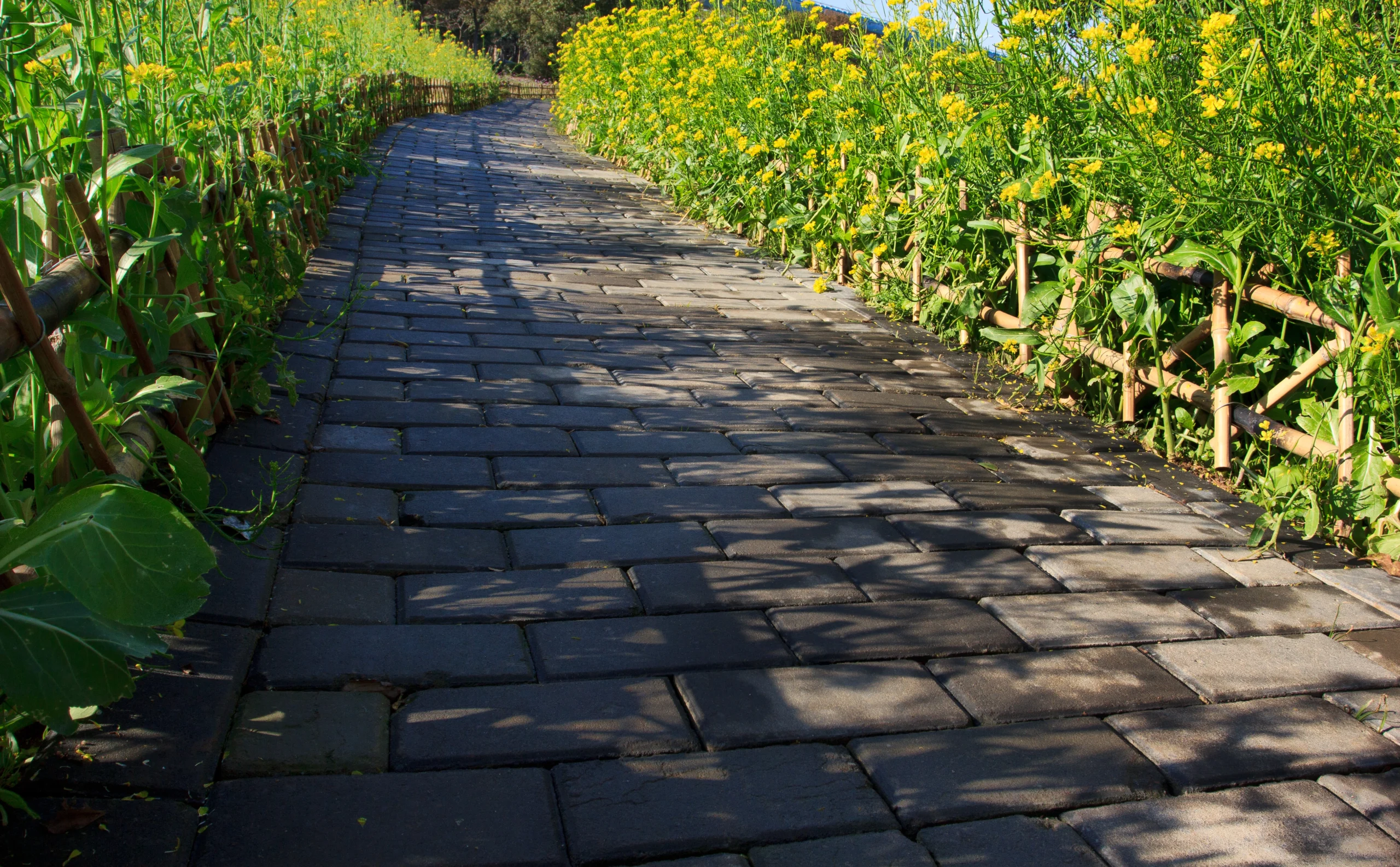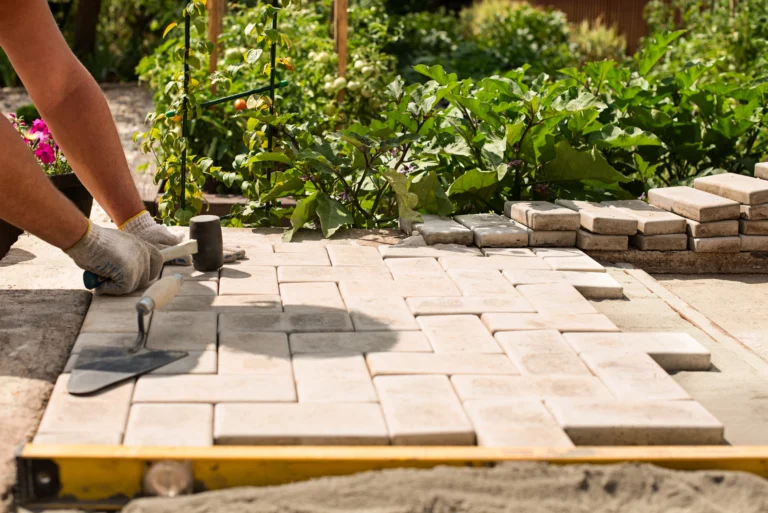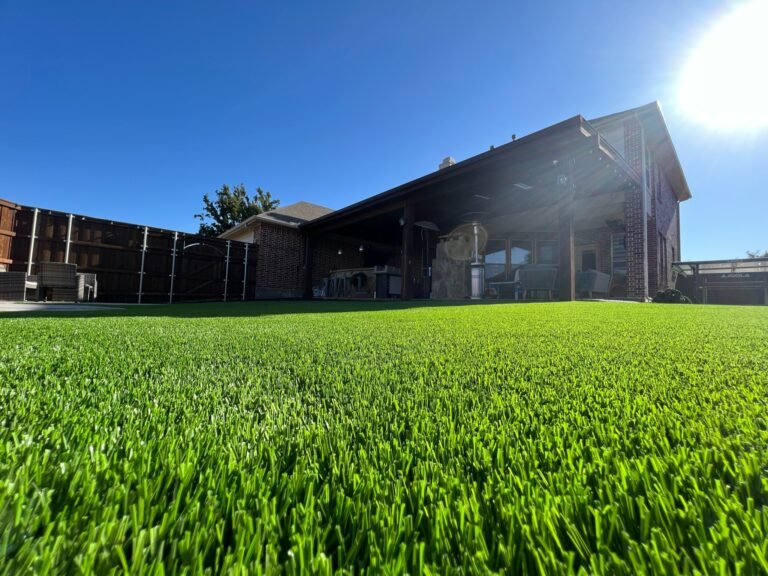Integrating Pavers with Natural Landscaping Elements: Seamless Design Solutions

Integrating pavers with natural landscaping elements is an innovative approach to enhancing the aesthetics and functionality of outdoor spaces. By carefully selecting materials and designs that complement the natural surroundings, property owners can create visually appealing and eco-friendly landscapes that seamlessly blend with the environment. The focus is on maintaining the harmony between the hardscape and softscape elements while ensuring the overall layout contributes to the property’s natural beauty and ease of use.
A crucial aspect to consider when integrating pavers within a landscape is the selection of materials that both serve the intended purpose and complement the existing greenery. Natural stone, recycled materials, and permeable pavers are popular choices, as they not only cater to the functional requirements but also contribute to the visual appeal. Additionally, choosing materials based on earthy tones and textures can enhance the harmony between the paving and the natural surroundings.
Implementing creative design strategies can further ensure that the integration of pavers effortlessly melds with the landscape. Some effective techniques include using irregular shapes and sizes for pavers, incorporating greenery between paver joints, and creating winding paths that follow the natural contours of the land. By combining these strategies, property owners can achieve a balance between aesthetics, functionality, and natural beauty, offering a truly unique and captivating landscape.
Designing with Pavers and Natural Landscaping
Choosing the Right Materials
When designing your outdoor space with pavers and natural landscaping elements, it’s essential to choose the right materials for hardscaping elements such as retaining walls, walkways, and outdoor structures like pergolas. Common materials include stone, concrete, brick, and natural stone. Each material offers different textures and colors, allowing you to complement the overall landscape design.
- Stone: Durable and low-maintenance, stone is popular for creating walkways and retaining walls. Flagstone is one example of a natural stone that can create a stunning effect.
- Concrete: Versatile and cost-effective, concrete pavers come in various shapes, styles, and colors to match your design preferences.
- Brick: Offering a classic look, brick is hard-wearing and can create charming pathways and patios.
- Natural stone: Ideal for integrating natural elements, natural stone materials such as slate, limestone, and granite provide unique textures and hues.
Planning Your Space
Proper planning is essential for a harmonious and functional outdoor space. Consider these factors during the planning and design process:
- Layout: Determine the dimensions of each area, such as walkways, retaining walls, or pergolas, while ensuring practical connections to other outdoor areas.
- Drainage: Ensure proper drainage by integrating appropriate slopes and materials to avoid water pooling and potential damage to your hardscape features.
- Accessibility and safety: Plan pathways and walkways that are accessible and safe for all users, using slip-resistant materials and proper lighting.
Integrating Flora and Water Features
An effective landscape design blends hardscape elements with natural elements like plants, trees, and shrubs. Consider these points when integrating flora and water features into your design:
- Plants: Choose plants that complement your hardscape textures and colors, keeping in mind their maintenance requirements, sunlight needs, and eventual growth sizes.
- Trees and shrubs: Strategically place trees and shrubs around your pavers and other outdoor structures to provide natural shade, privacy, and eye-catching focal points.
- Water features: Incorporate ponds, fountains, or other water features to add a sense of tranquility and movement to your outdoor space while enhancing its overall appeal.
By considering the right materials, thoughtful planning, and the integration of flora and water features, you can create a beautiful and cohesive outdoor space that combines pavers and natural landscaping elements seamlessly.
Maintenance and Enhancement
Caring for Pavers and Landscaping
Integrating pavers with natural landscaping elements adds aesthetic appeal and functionality to outdoor living spaces such as walkways, patios, driveways, and decks. To ensure their longevity and maintain a polished look, it is essential to perform regular maintenance.
Most pavers require low-maintenance due to their durability. Simple tasks such as sweeping and occasionally rinsing with water can help keep them looking pristine. For areas with more substantial dirt build-up, consider using a mixture of water and mild detergent to gently scrub the surface. To prevent weed growth and ensure stability, periodically fill the joints between pavers with fresh polymeric sand.
Natural landscaping elements, such as plants and trees, also play a crucial role in creating inviting outdoor spaces, like an outdoor fireplace area for relaxation, warmth, or entertainment. Invest time in trimming overgrown foliage, watering according to the plants’ needs, and applying mulch in the appropriate areas to retain soil moisture and prevent weeds from growing.
Adding Value Through Aesthetics
A well-designed space with pavers and landscaping elements improves the overall curb appeal and property value. Creating a focal point in your outdoor living area can be achieved by integrating unique design elements, such as an outdoor fireplace or a dedicated dining and gathering space.
Consider incorporating these suggestions to further boost the aesthetic appeal:
- Lighting: Illuminating pathways, patios, and decks with outdoor lighting can enhance ambiance, increase safety for guests navigating the area, and extend the usable hours of the space.
- Materials: Combine diverse materials, colors, and textures in your paver selection to create visually stunning walkways and patios.
- Plants: Thoughtfully choose plants with varying heights, colors, and growth patterns to establish a lush and dynamic natural landscape.
By prioritizing maintenance and focusing on aesthetic considerations, integrating pavers with natural landscaping elements ensures the creation of attractive and functional outdoor living spaces that stand the test of time.






